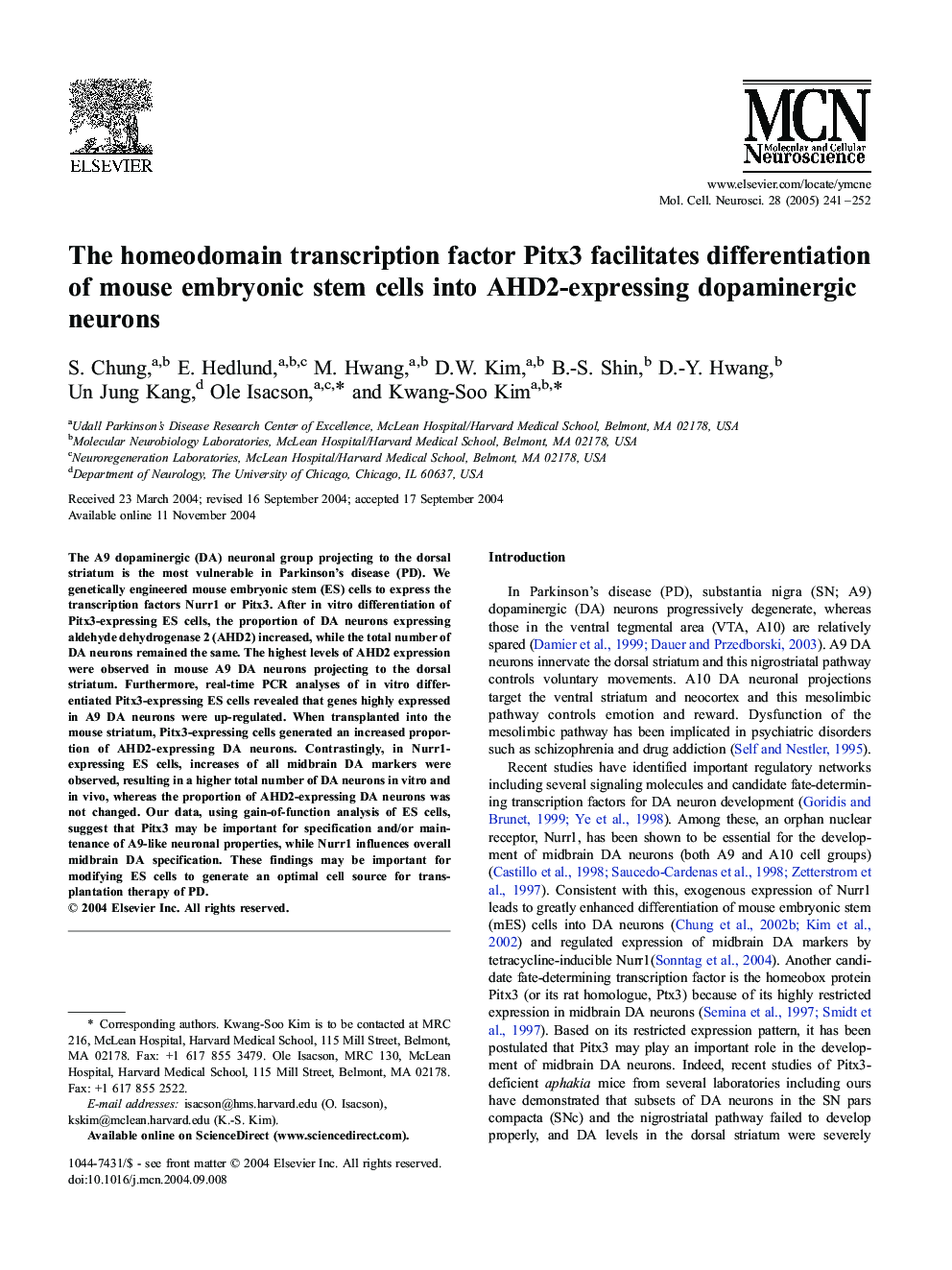| Article ID | Journal | Published Year | Pages | File Type |
|---|---|---|---|---|
| 10956871 | Molecular and Cellular Neuroscience | 2005 | 12 Pages |
Abstract
The A9 dopaminergic (DA) neuronal group projecting to the dorsal striatum is the most vulnerable in Parkinson's disease (PD). We genetically engineered mouse embryonic stem (ES) cells to express the transcription factors Nurr1 or Pitx3. After in vitro differentiation of Pitx3-expressing ES cells, the proportion of DA neurons expressing aldehyde dehydrogenase 2 (AHD2) increased, while the total number of DA neurons remained the same. The highest levels of AHD2 expression were observed in mouse A9 DA neurons projecting to the dorsal striatum. Furthermore, real-time PCR analyses of in vitro differentiated Pitx3-expressing ES cells revealed that genes highly expressed in A9 DA neurons were up-regulated. When transplanted into the mouse striatum, Pitx3-expressing cells generated an increased proportion of AHD2-expressing DA neurons. Contrastingly, in Nurr1-expressing ES cells, increases of all midbrain DA markers were observed, resulting in a higher total number of DA neurons in vitro and in vivo, whereas the proportion of AHD2-expressing DA neurons was not changed. Our data, using gain-of-function analysis of ES cells, suggest that Pitx3 may be important for specification and/or maintenance of A9-like neuronal properties, while Nurr1 influences overall midbrain DA specification. These findings may be important for modifying ES cells to generate an optimal cell source for transplantation therapy of PD.
Related Topics
Life Sciences
Biochemistry, Genetics and Molecular Biology
Cell Biology
Authors
S. Chung, E. Hedlund, M. Hwang, D.W. Kim, B.-S. Shin, D.-Y. Hwang, Un Jung Kang, Ole Isacson, Kwang-Soo Kim,
